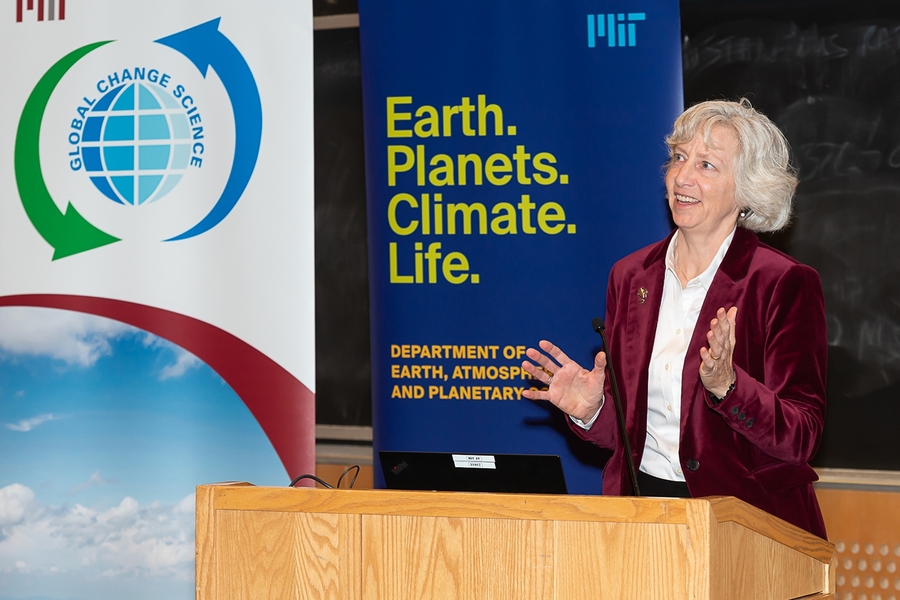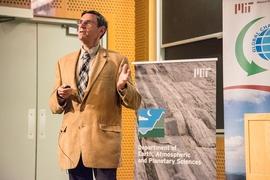How do you place a value on a single species? What’s the price of an ecosystem’s production or the cost of its loss? Last week, conservation scientists from the Intergovernmental Science-Policy Platform on Biodiversity and Ecosystem Services revealed the bottom line of their latest comprehensive United Nations report assessing the global state of nature: We’re facing a biodiversity crisis. Up to 1 million of about 8 million animal and plant species are threatened with the possibility of extinction, many within decades, and the culprit is human activity. The main drivers for this, the researchers point out, are changes in land and sea use, exploitation of organisms and materials for economic gain, climate change, pollution, and new evolutionary pressures like invasive species and pathogens.
Although the future laid out in the report may seem bleak, and economic and societal growth is at odds with protecting biodiversity, it does highlight some “transformative changes” we can make to mitigate this outcome while vastly improving the well-being of humanity. If we produce and consume natural resources in an equitable and sustainable manner, this “will better support the achievement of future societal and environmental objectives.”
Last week, Gretchen Daily, the Bing Professor of Environmental Science at Stanford University and Natural Capital Project co-founder and director, showed attendees of the 17th annual Henry W. Kendall Memorial Lecture how this could be done.
Daily — who briefly worked alongside the late Henry Kendall, the J.A. Stratton Professor of Physics at MIT and an ardent environmentalist — is a pioneer in the fields of conservation biology, ecology, and “countryside biogeography.” Her research elucidates the fates of species and ecosystems in a growing fraction of the Earth’s non-urban lands, which are becoming more strongly influenced by humanity. Through scientific study, Daily attempts to determine which species in a given ecosystem are relatively more important for sustaining the area’s biodiversity, and thus merit protection. She then links the natural services to humanity provided by the conserved biodiversity and incorporates these values into decisions in private practice, development, finance, and public policy.
In short, Daily evaluates the value the environment and its services afford people and then incentivizes them to invest in these, helping to ensure their future and that of the planet.
Valuing nature
The foundation of this lies in the argument that ecosystems are treated similarly to a capital asset that retains value. The Earth’s biosphere — land, air, water, and biodiversity — are all part of our life support system, which provides a stream of benefits to the world and people. These include coastal protection, urban cooling, food production and security, flood control, clean water, recreation, and mental health, in addition to climate and energy security.
Reflecting on recent environmental disasters like the California wildfires and flooding in China that are becoming increasingly common, Daily worries about the capacity of ecosystems to continue to provide these benefits in light of dwindling abundance due to human consumption, the expansion of civilization, and anthropogenic causes. We can attribute some of this valuation to our mindset on conservation that tends to fall into one of two camps. There’s the thought that “nature is infinitely valuable and that we shouldn’t be, from a moral perspective, just driving everything to extinction as the dominant species on the planet,” says Daily. “Yet, in decisions, mostly nature comes in at a zero, if it’s not something to be extracted or mined.” This neglects the fact that scarcity conveys a value all its own. “Neither of those extremes has helped informed decisions [on conservation and consumption] in a productive way.”
Daily suggests a compromise: Rather than thinking of the environment as an all-you-can-eat buffet with a one-time, exhaustible set of resources, people need to strike a balance between livelihood and conservation, being mindful of the limited resources, applying restraint when using these them, and investing in these life support systems to maintain them.
Fieldwork, like the kind Daily and her research group conduct, helps researchers understand the interplay between different organisms and the environment, put numbers to these relationships, and establish where to draw the line and the worth of biodiversity. In this way, they can establish “lower-bound” values on the services provided. This new data can then inform and motivate decisions to shift practices and policy, driving “economic dimensions of growth that are important, but at the same time dramatically reducing our impact on the life support systems we depend on truly, so securing human well-being at the same time as security the environment over the long run.”
Promising pathways for green finance
The idea of a field interfacing ecology and economics predates Daily’s research. In 1991, economist Ken Arrow demonstrated how nature behaves like an asset that can be invested in with the current economic system. Since then others have implemented the strategy, joining the growing movement.
Costa Rica led the way as an early adopter. Setting up the first national payment for ecosystem services program, the country went from having the world's highest recorded deforestation rate to net reforestation, which has continued for over 20 years thanks to buy-ins from investors for the first carbon offsets and pharmaceutical groups for biodiversity benefits. This also provided climate stability, water purification, and scenic beauty.
Daily’s own work there helped to elucidate and enumerate the benefits of biodiversity to agriculture, since about a third of our food supply is from pollinated species of crops, and agribusiness drives significant biodiversity loss. To create a “win” for all parties, Daily works to help integrate nature into agricultural practices. Through various studies, her team teased apart intricate ecosystem relationships and the added value they conferred, and found that wildlife-friendly farming yielded more crops and revenue compared to traditional practices — a bright outcome. Other examples included improving New York City watersheds to ensure clean drinking water at a cost cheaper than installing filtration plants. Additionally, there were indirect benefits delivered that the analysis didn’t capture, but further supported justification for green investments.
Daily wants to encourage outcomes like these by systemizing and building a universal approach that replicates and scales cases like these around the world. She’s thinking critically about the barriers to entry and how to overcome them, driving open pathways to green development that provide economic, social, and ecological “wins” for all involved.
Capturing and translating value into winning scenarios
The Natural Capital Project, formed in 2006 with the help of Daily, has been building up these approaches to the scale of cities and even countries. To date it has amassed the involvement of about 50 research institutions and 200-plus implementing institutions globally. To optimize conservation efforts and investments in green capital, the group has developed an open-source, free, data and modeling software platform called InVEST (integrated valuation of environmental services and tradeoffs). The model helps determine what portfolio of investments and interventions can achieve a particular environmental goal under various budgets, as well as positive impacts on human well-being and mental health.
Most countries have taken up the model to some degree and the group is seeing significant results, particularly when it comes to clean water. In Latin America, clean water scarcity is plaguing cities. The group has examined social and data layers related to the watersheds feeding the city of Tulua, Colombia, and found a mixture of funds that have considered protecting forests upstream, reforesting, silvopasture, fencing, and enrichment around streams to help alleviate the problem. The Natural Capital Project has tested this in Africa as well.
China, which has rapidly industrialized and seen incredible pollution, is changing gears to become the ecological civilization for the 21st century. The country is increasingly viewing its natural resources as an asset. “Clear waters and lush mountains are gold and silver,” said Daily, translating the motto of this nationwide initiative. “We will not trade them for gold or silver.”
Over a 10-year period the country zoned about 49 percent of its lands for ecosystem services, vastly improving soil fertility, flood control, sandstorm control, water supply, and biodiversity, all the while paying 200 million people to restore natural capital. Follow-on monitoring studies found it to be a success.
Daily suggests that these cases support the need to move beyond gross domestic product and to consider another metric — gross ecosystem product — when making these decisions, since GDP does not capture the full suite of services provided to humanity. It would better account for ecosystem contributions to the economy and society, guide financial compensation among regions, and evaluate policies and performance of conservation over time.
“The bottom line is that we don’t have much time,” she says, reflecting on Kendall’s comment and noting that there are many opportunities on the horizon to turn this around. “We have a lot of inspiration to look to, and a lot of eager, open-minded and ready-to-run leaders in scaling institutions with whom we can engage.”
The Henry W. Kendall Memorial Lecture Series, which is sponsored by the MIT Center for Global Change Science and the Department of Earth, Atmospheric and Planetary Sciences, honors the memory of Professor Henry W. Kendall (1926-1999), who was the J.A. Stratton Professor of Physics at MIT. Kendall received the Nobel Prize in 1990 for research that provided the first experimental evidence for quarks. He had a deep commitment to understanding and finding solutions to the multiple environmental problems facing the world today and in the future. Kendall was a founding member of the Union of Concerned Scientists, and this lecture marked 50th anniversary of the organization. The permanently endowed Kendall Lecture allows MIT faculty and students to be introduced to forefront areas in global change science by leading researchers.










